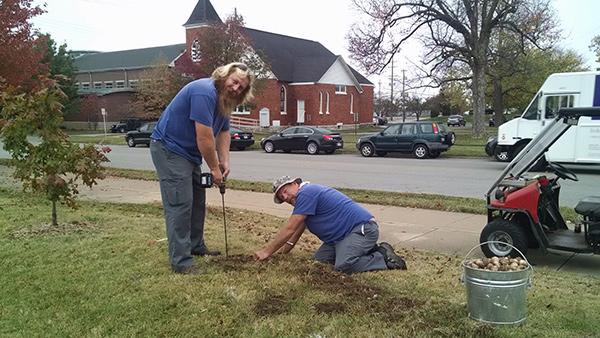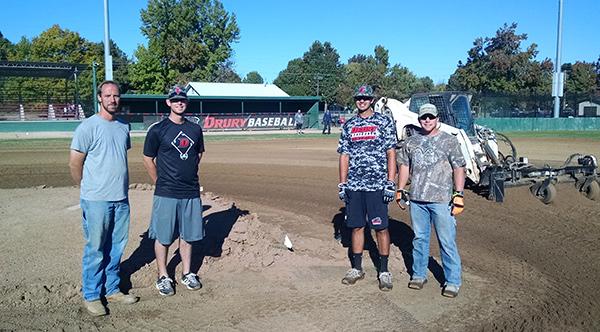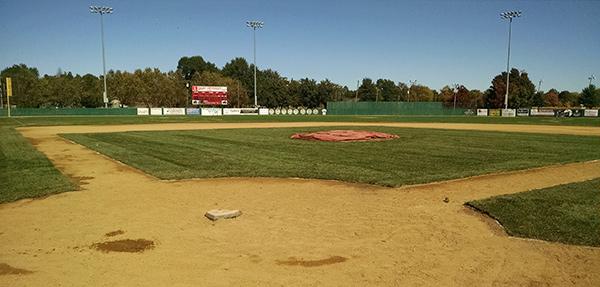Realities, Or Just More Dreams... Part Two
One of the comments I hear from my grounds crew is that I jump around on projects too frequently. While I see some truth to this observation, there is a reasonable and desired effect from this job-jumping. Having lots of tasks -- especially broad efforts -- lined up, allows for at least one to always be practical. If factors outside my control (weather, budget, and organizational objectives) or factors within my control (scheduling, training, crew morale, etc.) put a damper on one, I have another ready. It is a Pareto chart of objectives that to a certain degree, let us frequently be working on what is easier, more exciting, or seasonally necessary.
This is most definitely not to say that we only work on what is easy, but sometimes a difficult job postponed becomes an easy job later. I also never see my job as finished. There is always something else that should be done, and time is never on my side.
Training
I do not do a good job training my crew. I give instructions, and specifications about how the work should be accomplished, but this isn't training per se. Training is instilling knowledge and skill that is durable in the employee, and imparting information that can be drawn upon from within the employee. A key component however to successful training is the desire by the individual to be trained. My own training has predominantly been motivated by my desire to learn and improve.
Overall, my crew is not concerned with pursuit of mastery. Without internal motivation, training sometimes turns into "killing time". This is an area where TurfNet has been valuable for me. Using webinars, superintendent blogs, and expert resources has taken the training out of a me/them relationship and allows learning from an outside source. I realize that continual training is vital and will continue to seek beneficial ways for it to occur.
Naturalized Areas
When I first came to Drury University in 2011, one of the biology professors asked me How will people know that Drury is a "Green" campus? This question has stuck with me through my time here. My thought is that visitors will need to see something here that is obvious (noticeable) and can be determined to be green (understandable). The way I suggest is to renovate several strategically valid areas as meadow/native areas.
Along one of our main drives is a turf area that serves no functional purpose (passive). In fall of 2015 we began planting spring bulbs in this area (inspired by the massive turf/bulb beds on the Mt. Vernon Bike Trail in Alexandria, VA). The bulbs will provide beauty, and transitional validation for not mowing the turf, culturally transforming the area into meadow. Once people get used to other than 3.5 turf in this area, it will be less shocking to them to see a meadow emerging. This spring we plan on installing a quantity of 1 gallon native perennials, grasses and small shrubs to continue the transition.

Planting bulbs in a future meadow area.
Sports Turf
Drury has two turf areas on campus used for intramural sports, and one off campus baseball field where the Division II Drury University Panthers play. Until recently, other grounds priorities have kept us from really managing the two on-campus fields as closely as we should have, and the baseball field was managed by the Panthers themselves with support from the City Parks Department. This year Drury Grounds wants to step up the intensity with which all of these areas are managed. This should result in more effective culture and an improvement in playing surface quality. Since, much like golf, sports turf requires specialization, we are taking steps to improve our sports turf capabilities.
Gut Check! Semis on the infield show a COMMITMENT TO QUALITY!

Panther Baseball Head Coach Scott Nasby (2nd from L) and staff are happy with the progress.

New infield at Meador Park, October 2015.
The first step is improved knowledge. While I have a good understanding of turf maintenance and culture, last year I took an online course, Baseball Field Management, through the Turf Department at Ohio State. While this was not hands on per se, it did give a good overview by using expertise of OSU and sports turf professionals.
Drury Grounds is also taking advantage of local knowledge by renewing our membership in Ozarks Sports Turf Managers Association, our local STMA affiliate. This participation allows us to take advantage of people capable to give advice, and eager to do it. Lastly is simply determining new quality expectations and commitments which then drive additional cultural steps toward field improvement.
Running Out of Time, and Money
Most accomplished grounds managers I have met always easily determine more that needs to be done. To-do lists seem to move in one direction only. Grounds operations never have enough time to do all of these tasks either. The job seems consistently like Tetris, and we are trying to keep from seeing Game Over. Prioritizing (based foremost on grounds manager expertise), sharing priorities, and effectively carrying them out through efficient resource utilization keeps you playing.



0 Comments
Recommended Comments
There are no comments to display.